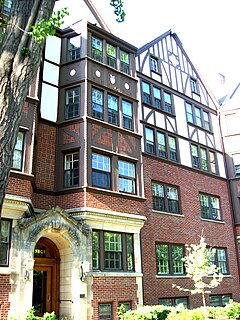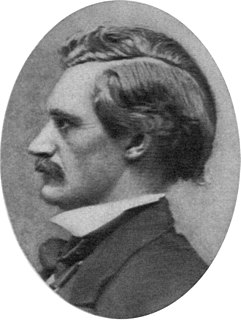 W
WHungarian Americans are Americans of Hungarian descent. The U.S. Census Bureau has estimated that there are approximately 1.396 million Americans of Hungarian descent as of 2018.
 W
WAlbany is a town in eastern Livingston Parish, Louisiana, United States. The population was 1088 at the 2010 census. It is part of the Baton Rouge Metropolitan Statistical Area.
 W
WAn American Rhapsody is a 2001 Hungarian-American biographical drama film that tells the story of a 15-year-old girl from a Hungarian-American family. The film is based on the true story of the director, Éva Gárdos, who also wrote the script.
 W
WBuckeye–Shaker is a city planning area on the east side of Cleveland, Ohio. It encompasses two neighborhoods: in its south and west the old Buckeye neighborhood and in its northeast the Shaker Square neighborhood which is centered on an historic shopping district and an eponymous rapid transit station, located at the intersection of Shaker and Moreland Boulevards, on the light rail line that connects the city of Shaker Heights to downtown Cleveland. From the early to mid-20th century, the Buckeye Road neighborhood was known as Little Hungary, serving as the historic heart of Cleveland's Hungarian community, which at one time was the largest in the world outside of Hungary and for years has been almost completely African-American. Shaker Square, continues to be known as one of Cleveland's most notable neighborhoods, in terms of shopping, dining, architecture, education of its residents, participation in civic life, diversity and quality of living.
 W
WThe Forty-Eighters were Europeans who participated in or supported the revolutions of 1848 that swept Europe. In the German states, the Forty-Eighters favored unification of the German people, a more democratic government, and guarantees of human rights. Disappointed at the failure of the revolution to bring about the reform of the system of government in Germany or the Austrian Empire and sometimes on the government's wanted list because of their involvement in the revolution, they gave up their old lives to try again abroad. Many emigrated to the United States, the United Kingdom, and Australia after the revolutions failed. These emigrants included Germans, Czechs, Hungarians, and others. Many were respected and politically active, wealthy, and well-educated. A large number went on to be very successful in their new countries.
 W
WThe Himler Coal Company was a cooperative mining company established in 1918 by Hungarian-American immigrant Martin Himler. The company was responsible for the establishment of two company towns, Himler, West Virginia and Himlerville, Kentucky. Its finances exhausted, the company was wiped out by flooding in 1928.
 W
WHungarian Ohioans are Hungarian Americans living in Ohio. Their number was 203,417 in 2010 and 183,593 in 2014. Fairport Harbor, Ohio is 11.8% Hungarian American. In Cleveland and its neighboring areas there live more than 107,000 Hungarians, of which over 7,400 speak the language, the third highest number in the nation. Some resources stated that there was time when Cleveland was the second greatest Hungarian settlement outside Budapest. Most of the Hungarians live in Cuyahoga County, Ohio, where they make up 3.1% of the total population. There is also a large colony of Hungarians in Toledo, Ohio. Two former local representatives reside in Toledo: Peter Ujvagi and Matt Szollosi. In Toledo one can find the famous Tony Packo's Cafe.
 W
WHungarian Slovak Gypsies immigrated to the United States in the late 19th century, many from Kassa, Hungary. They settled in the cities of Braddock, Homestead, Johnstown, and Uniontown, Pennsylvania; Cleveland and Youngstown, Ohio; Detroit and Delray, Michigan; Gary, Indiana; Chicago, Illinois; and New York City. The Hungarian Slovak Gypsies were a community of settled Roma, and in the United States were well known for playing music for the Central European immigrant communities in which they settled. These Roma were known for playing in cafes and restaurants, the name associating these Romani as Bashaldé was made up in late 20th century, and in Hungary they are called Romungro Romani; portions of them were also known as Romungre. In the early 1900s the Roma in Braddock, Pennsylvania, purchased an entire block of homes, making them the largest population of settled Roma in the United States.
 W
WThe Kossuth Colony Historic District, named for Lajos Kossuth, is a nationally recognized historic district bounded by Baltimore Street, Mack Avenue and Notre Dame Avenue in Dayton, Ohio. The Kossuth Colony was built in 1906 to house Hungarian immigrant workers for the Barney and Smith Car Company, a rail car manufacturer that ranked among Dayton's largest and most venerable firms. Comparatively few changes have been made to the forty houses in the colony, although the houses' white picket fences have been removed. Many houses in the district are simple gable-front residences with minimal setbacks, and asbestos siding covers many exterior walls in the district.
 W
WMusic Box is a 1989 American crime drama film that tells the story of a Hungarian-American immigrant who is accused of having been a war criminal. The plot revolves around his daughter, an attorney, who defends him, and her struggle to uncover the truth.
 W
WStockyards, colloquially the Stockyards, is a neighborhood on the West Side of Cleveland, Ohio. It is located between I-71 to the south, roughly Ridge Road to the west, West 44th Street to the east, and just south of I-90 to the north. The neighborhood has been historically home to significant communities of Hungarians and Czechs, and since the 1980s, it has also been home to a growing Hispanic community.